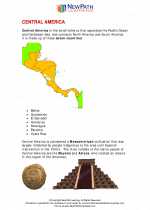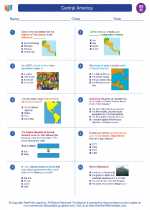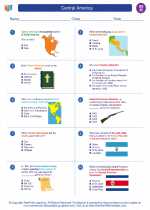Antarctica
Antarctica is the southernmost continent and is the fifth-largest continent in terms of area. It is also the coldest, driest, and windiest continent, and is largely covered by ice. Here are some key points to understand about Antarctica:
Location
Antarctica is located at the South Pole and is surrounded by the Southern Ocean. It is the only continent without a native human population.
Climate
Antarctica has an extremely cold climate, with temperatures reaching as low as -80°C (-112°F). The continent experiences long, dark winters and short, cool summers. Its harsh climate and remote location make it a challenging environment for human habitation.
Wildlife
Despite its extreme conditions, Antarctica is home to a variety of wildlife, including penguins, seals, whales, and various species of seabirds. The surrounding waters are rich in marine life, including krill, which forms the basis of the Antarctic food web.
Scientific Research
Antarctica is a major center for scientific research, particularly in the fields of climate science, glaciology, and astronomy. The continent's pristine environment and unique conditions make it an ideal location for studying Earth's climate and natural processes.
Environmental Protection
Due to its fragile ecosystem, Antarctica is protected by the Antarctic Treaty System, which sets out guidelines for the conservation of the continent and its surrounding waters. The treaty prohibits military activity, mineral mining, and nuclear testing, among other activities, in order to preserve the environment.
Study Guide
Here are some key questions and topics to consider when studying Antarctica:
- What are the major geographical features of Antarctica?
- How does the climate of Antarctica compare to other continents?
- What are some of the unique adaptations of wildlife in Antarctica?
- What are the main purposes of scientific research in Antarctica?
- What are the environmental challenges facing Antarctica, and how are they being addressed?
- What is the significance of the Antarctic Treaty System?
Studying Antarctica provides insights into the Earth's climate, conservation efforts, and the resilience of life in extreme environments. It also offers a unique perspective on international cooperation for the common goal of protecting a pristine and fragile ecosystem.
[Antarctica] Related Worksheets and Study Guides:
.◂Social Studies Worksheets and Study Guides Eighth Grade. Central America

 Worksheet/Answer key
Worksheet/Answer key
 Worksheet/Answer key
Worksheet/Answer key
 Worksheet/Answer key
Worksheet/Answer key
